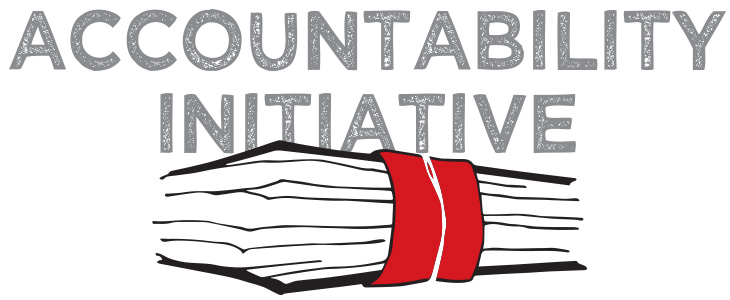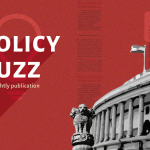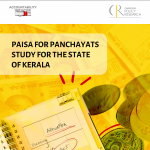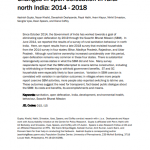
PAISA 2011 Highlights
17 April 2012
Background
The PAISA survey is conducted annually through the Annual Survey of Education –Rural. This is the second PAISA report. In 2009, the survey covered a total of 14231 Primary and Upper Primary Schools in rural India. The 2010 survey covered 14240 schools and the PAISA 2011 survey covered 14,283 schools across rural India. The ASER survey is a citizen led survey conducted through students, district education institutes, community organisations and non-governmental organisations. PAISA is thus the first and only national level, citizen led effort to track public expenditures.
PAISA’s specific point of investigation is the school grants in Sarva Shiksha Abhiyan (SSA). SSA is currently the Government of India’s primary vehicle for implementing the Right to Education Act (RTE). SSA is thus the most crucial vehicle for the overall provision of elementary education in the country today. In 2010-11, school grants accounted for 5% percent of the total SSA allocation. Small as they are, these are the only monies over which School Management Committees (SMC) can exercise some expenditure control. Consequently, school grants have a significant bearing on the day to day functioning of the school – whether school infrastructure is maintained properly, administrative expenses are catered for and teaching materials (apart from textbooks) are available. In the context of RTE, these grants take on an even greater relevance. The RTE mandates that all SMC make school development plans. The intent behind these plans is to create a bottom-up, school based funding structure where individual school needs are prioritised.
In the last two years, three types of grants have been provided for all elementary schools in the country.[1] These are: a) Maintenance grant; (ii) Development grant or School grant; and (iii) Teaching Learning Material grant (these go directly to teachers). The grants arrive at schools with very clear expenditure guidelines. The Maintenance grant is for infrastructure upkeep, the Development/ School grant is meant for operation and administration and Teacher Learning Material is for extra instructional aids that may be required for teaching. Apart from this, grants are also provided for building additional classrooms. In PAISA 2012, we have attempted to track the classroom grant as well.
The PAISA survey focuses on the following key questions:
(a) Do schools get their money?
(b) When did schools get their money (i.e. did funds arrive on time)?
(c) Did schools get their entire entitlement (i.e. the set of grants that are meant to arrive in school bank accounts as per the norms)?
(d) Do schools spend their money?
(e) If so, what are the outputs of this expenditure?
To contextualise school level expenditures and provide a flavour of the larger planning and budgeting process, PAISA 2011 also reports on overall trends in Sarva Shiksha Abhiyan (SSA) allocations and expenditures across three years: 2009-10 and 2011-12.
Findings from the PAISA Survey
SSA allocations and expenditures
- India’s SSA budget (Government of India and State share) has more than doubled between 2009-10 and 2011-12, up from Rs. 26,169 to Rs. 55,746.
- Across India, per child allocation has more than doubled from Rs. 2,004 in 2009-10 to Rs. 4,285 in 2011-12.
- There are state variations in outlays. Outlays in Andhra Pradesh and West Bengal doubled while outlays in Haryana and Jharkhand had a minimal increase of 39% and 30%, respectively.
- In 2010-11, per child allocation ranged from `3,100 and `3,600. Per child allocations for Nagaland were highest at `12,556, followed by Sikkim and Chhattisgarh at `5,723 and `5,511, respectively.
- Allocations to teachers (salaries, training and teaching inputs such as Teacher Learning Equipment) accounted for the largest share of the SSA budget. In 2011-12, teachers accounted for 44% of the budget. School infrastructure accounted for the second largest share with an allocation of 36% while children (entitlement and special programs) accounted for 10% of the SSA budget.
- There are variations in allocations across states. In 2011-12, Bihar allocated 32% of its SSA budget to teachers. 51% of Bihar’s budget was allocated to school infrastructure. Uttar Pradesh and Rajasthan allocated 72% and 74%, respectively to teachers.
- In 2010-11, India spent 70% of its SSA budget. Spending was low for quality related activities at 73% and community mobilization and training was the lowest at 63%.
School grants
Do schools get their money?
- Overall, grant receipts to schools have improved from 77% in 2008-09 to 82% in 2010-11. 2010-11 figures show a marginal decline from 2009-10 when 84% schools reported receiving grants.
- There some differences across grant type. In 2010-11, 84% schools reported receiving the maintenance grant; 87% received the teacher learning material grant and 77% received the development grant.
- Grant receipts vary by state. Uttar Pradesh’s schools report the largest improvements in grant receipts from 67% in 2008-09 to 78% in 2010-11. Grant receipts in Bihar fluctuated over the three years. In 2008-09, 73% schools reported receiving grants. This improved to 87% in 2009-10 and dropped, marginally to 82% in 2010-11. Jharkhand’s schools also reported similar fluctuations. In 2008-09, 76% schools received grants. This improved to 91% in 2009-10 but dropped to 85% in 2010-11.
Does money reach on time?
To assess speed of fund flows, schools were asked whether they received grants for the current fiscal year (2011-12 in this case) at the time of the survey. The survey is conducted between October and November which is half way through the fiscal year.
- Overall, there has been little change in the timing of grant receipts. In 2009-10, 59% schools reported receiving grants. This dropped marginally to 53% in 2011-12.
- Unsurprisingly, there are variations in timing across states. Punjab’s schools reported the most dramatic fluctuations. In 2009-10, 80% schools reported receiving their grants by November. This dropped to 91% in 2010 and a further 32% in 2011. Bihar’s schools also reported similar variations. In 2009, 77% schools reported grant receipts by November. This increased to 60% in 2010 but dropped to 30% in 2011.
Do schools get all their money?
While schools get money, data suggests that they don’t always report receiving their entire entitlement. It is important to note that on close examination of the data, there were cases where respondents did not indicate types of grants and instead reported receipt of one consolidated figure. Therefore, this data could also be taken as a proxy for awareness levels amongst headmasters (the primary respondents of this survey).
- Overall, the quantum of grants received in schools has improved. In 2008-09, 55% schools reported receiving all 3 grants. This improved to 70% in 2010-11.
- There are state variations. Grant receipts in Rajasthan improved from 38% schools that reported receiving all 3 grants in 2008-09 to 54%. Himachal Pradesh also saw a significant improvement from 71% schools receiving all 3 grants in 2008-09 to 90% in 2010-11.
Do schools spend their money?
- On average about 90% schools that receive money report spending their money.
- Schools spend the bulk of their money on essential supplies. Between April 2010 and November 2011, 68% of India’s schools whitewashed their walls and 69% used some of their money to fund school events.
Links between outlays and outcomes
It is widely recognized that increased outlays in elementary education have not led to improved outcomes. To examine this in greater detail, PAISA 2011 undertook a preliminary analysis of the links between per child expenditure under specific categories (teachers, school, children, quality) and learning outcomes. To do this, PAISA analysed per child expenditure data for 2009-10 and ASER learning level data for 2010. This analysis points to a positive correlation between per child expenditure on quality and learning levels. This correlation merits further analysis, especially because expenditure on quality is relatively low and is usually incurred towards the end of the financial year. Interestingly, PAISA did not find any correlation between expenditure on teachers and children’s learning levels.
[1] With the implementation of RTE for the 2010-11 fiscal year some states introduced new grants such as a transport grant and uniform grant. In the interests of developing a comparative picture both across fiscal years and across states, we have restricted our tracking exercise to these 3 grants. In PAISA 2011, we will track these new grants.





